Oh, and let’s not forget Monument station too
In the heart of London's financial districtI love digging deeper into each of London’s districts, there is always something unusual and intriguing to discover. I usually end up leaving a place with more questions than answers.
More recently I’ve been narrowing this down further and uncovering what you can discover just within a hop, skip and a jump from a London tube station. Take a peek at what lies around Tower Hill tube station.
In this post, I’m poking my inquisitive eye around the ancient streets and lanes that are nearby Bank and Monument underground stations.
With the centuries of history that pour through these oddly named streets, I’m sure we’ll find some hidden gems.
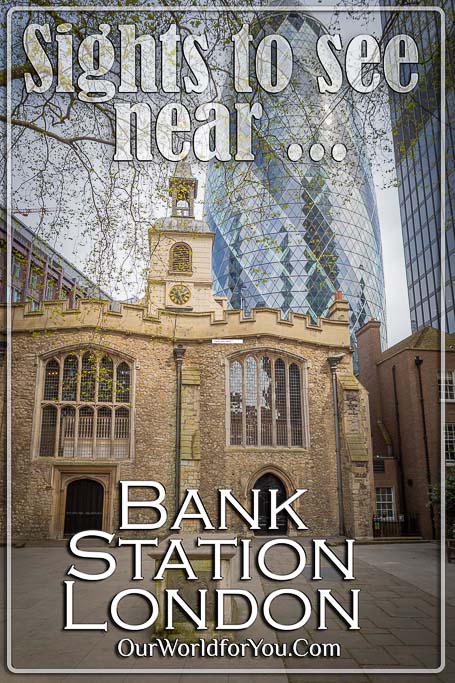
Where is Bank in London?
How to get to Bank?
Bank Station is linked to Monument Station by an underground walkway, so they are often referred to together. In total the two stations serve five underground lines, and the Docklands Light Railway are both in ‘Zone 1’.
Bank Station lines;
Central
Northern
Waterloo & City
Dockland Light Railway (DLR)
Monument Station lines;
Circle
District
Don’t forget if you have a contactless bank card, or a card assigned to your phone you tap and pay with that. (For more check out the TFL site(Transport for London))
Discovering London
A little history on Bank stationBank Station opened in 1900 and is named after the Bank of England, which is located along Threadneedle Street. Nearby one of the many entrances that serve the tube station.
Deep in the heart of the financial ‘City of London’, Bank tube station is a hive of activity and a central hub for your busy city worker. Although, if you visit here at the weekends, the station and the streets are deserted.
Hidden underground there is a maze of walkways, a network of tunnels, escalators, lifts and deep twisting stairwells to lose yourself in. Though don’t be put off, it’s all part of the fun.
Stretching high above you, there is a wealth of incredible and fascinating architecture, which sits all-around Bank Junction.
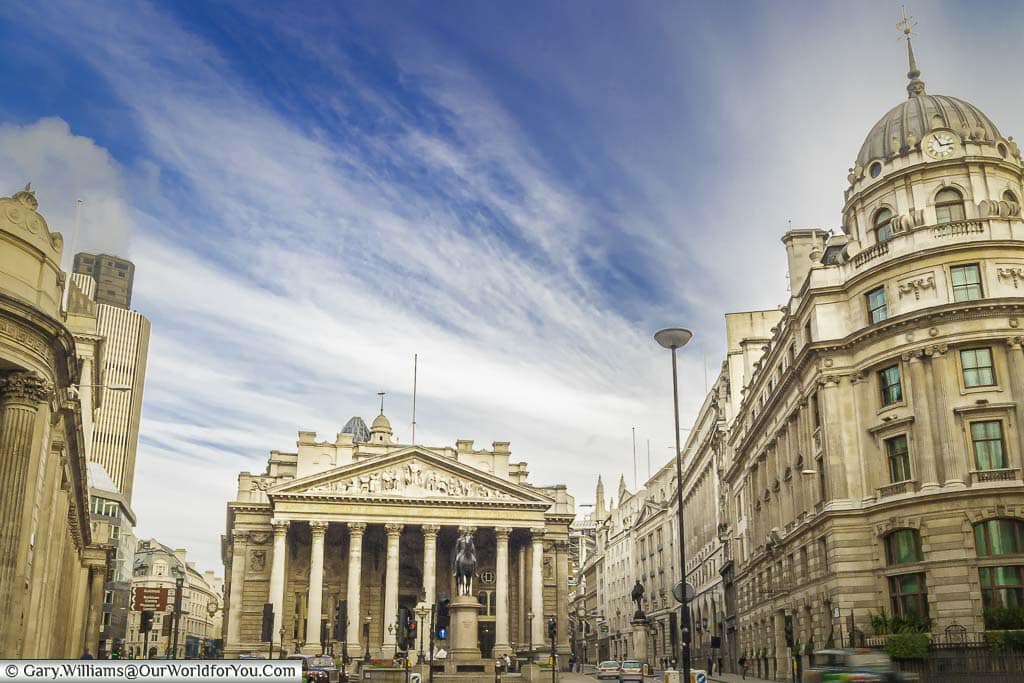
Bank Junction is bustling over-ground just as much as it is under, as nine streets converge onto this one intersection.
They are Threadneedle Street, Cornhill, Lombard Street, Mansion House Place, Walbrook, Queen Victoria Street, Poultry, Mansion House Street and Prince's Street.
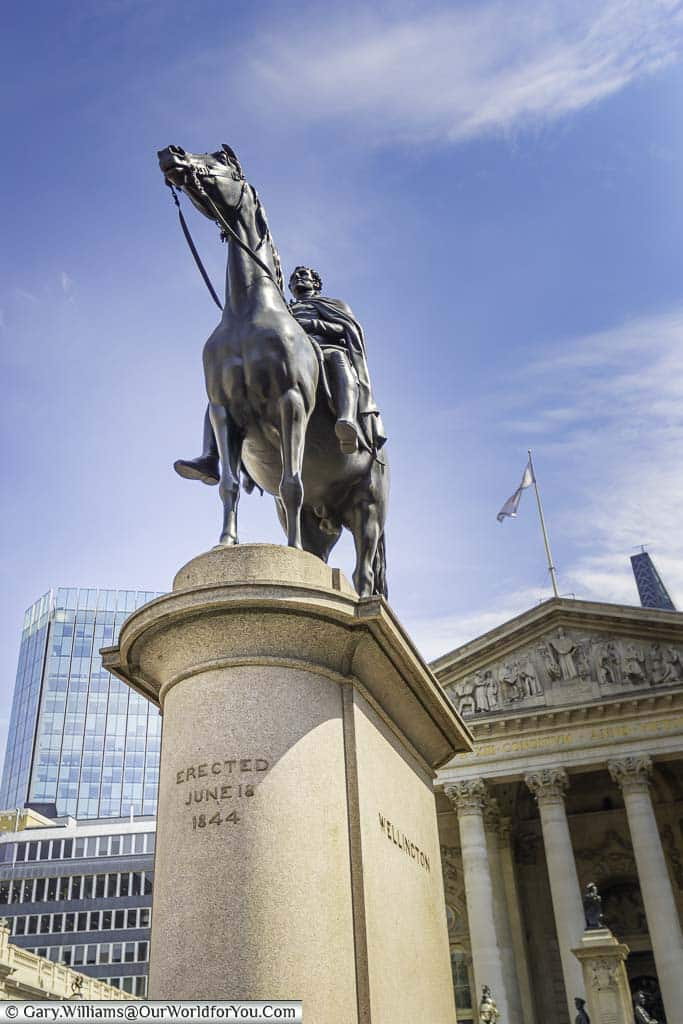
This district of London suffered devastatingly during the Great Fire of London in 1666. Pudding Lane, where the fire is believed to have started, is just by Monument station. The Monument that stands outside the station commemorates this event.
During the Blitz from September 1940 to May 1941 Bank was again severely hit. A bomb landed and created a huge crater in the middle of Bank Junction, just missing the Royal Exchange, Mansion House and the Bank of England.
Today Bank Station is undergoing a refurbishment project which should be completed in 2022. In my opinion, it certainly isn’t a moment too soon.
A walk through the City of London
Bank of EnglandThe first prominent building to point out is the Bank of England, otherwise known as ‘The Old Lady of Threadneedle Street’.
The Bank of England was established in 1694 and is one of the oldest banks in the world. She has been located on Threadneedle Street since 1734.

Although banknotes are no longer produced onsite, the original notes created in 1694 were all handwritten. Historical figures have been printed on the reverse of the British banknotes since 1970. The latest of which is the artist J.M.W. Turner who appeared in February 2020 on the back of a £20 note. It brought a bit of fame to the seaside town of Margate as it depicts the lighthouse and Turner Contemporary Gallery.
For an in-depth look behind the scenes of the Bank, head to the Bank of England museum located inside. It is free of charge to visit, and open Monday to Friday from 10am to 5pm.
The Heart of the City of London
The Royal Exchange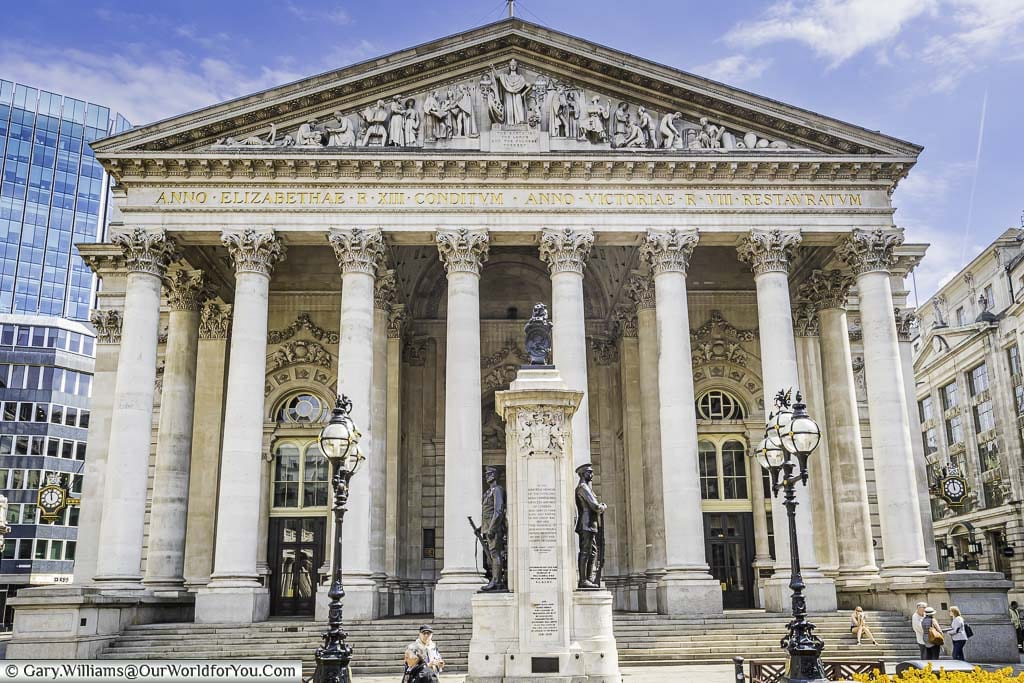
It is the third Royal Exchange to be built on this site and dates from the 1840s. It was opened by Queen Victoria in 1844. The original Royal Exchange which constructed in 1571 and also opened by the then current Queen Elizabeth I; however, it was destroyed by the Great Fire in 1666.
The present layout is in the based on the original four-sided design, with a courtyard in the middle, where merchants could trade with each other. This elegant building would once have been open to the elements. However, today the luxury boutiques, cocktail bars and high-end stores are all covered by a glass roof.

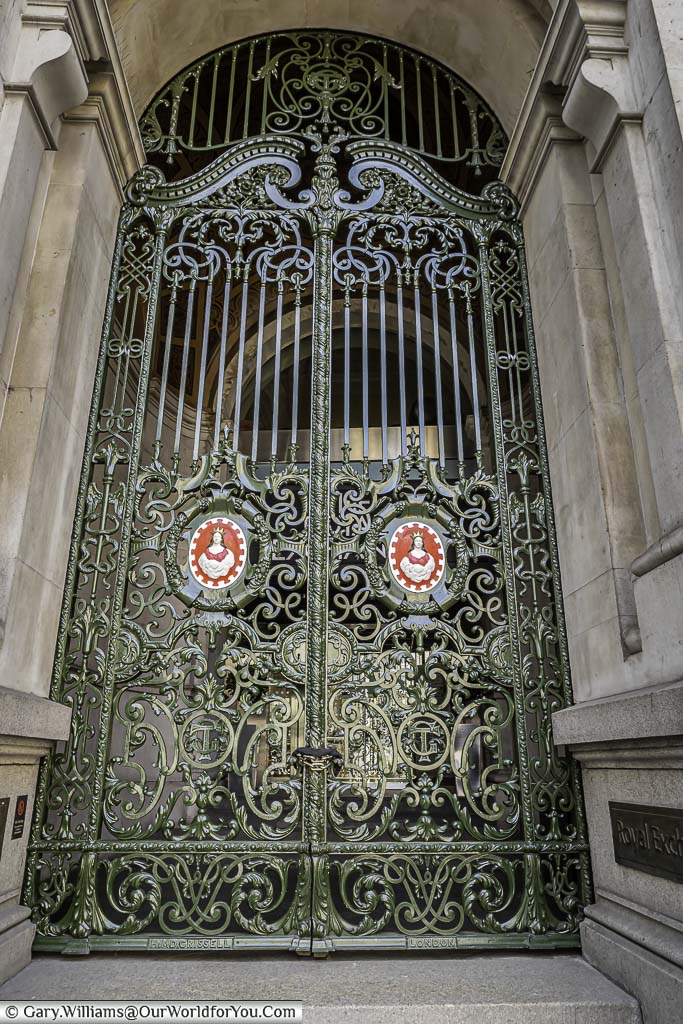
We have a little book on our shelves that we sometimes delve into when we're about to hit an area of London.
Packed full of historical facts, and broken down into the different regions of London, it's a great resource to help you see what's hidden in plain sight.
Available in Kindle & Hardback editions, it's an excellent addition to anyone's collection who loves London.
The Lord Mayor of London's home
Mansion House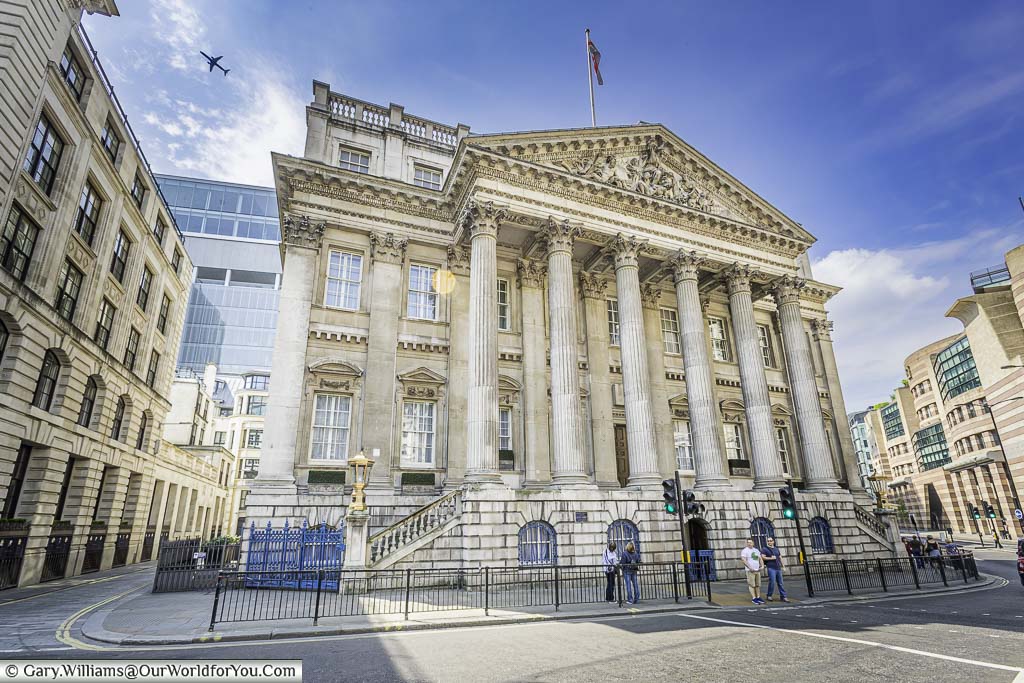
The role is now only held for a year, and the new Lord Mayor is sworn in every November. A pageant is led by the Lord Mayor from Mansion House to the Royal Courts of Justice in the City of Westminster, where allegiance is sworn to the Queen. This annual event is known as the “Lord Mayors Show”.
Mansion House was built in the mid-18th-century, the elegant banqueting halls inside are still used today for official City of London functions.
Have you seen?
The modern side of London
SkyscrapersI do love the fusion of the contemporary architecture standing toe-to-toe with the old weather-worn ancient buildings within London. Watching the reflections of the old structures rippling across the glass of the new.
So many skyscrapers are now springing up across London’s skyline, you can easily lose track of the weird and wonderful names that they have been given.
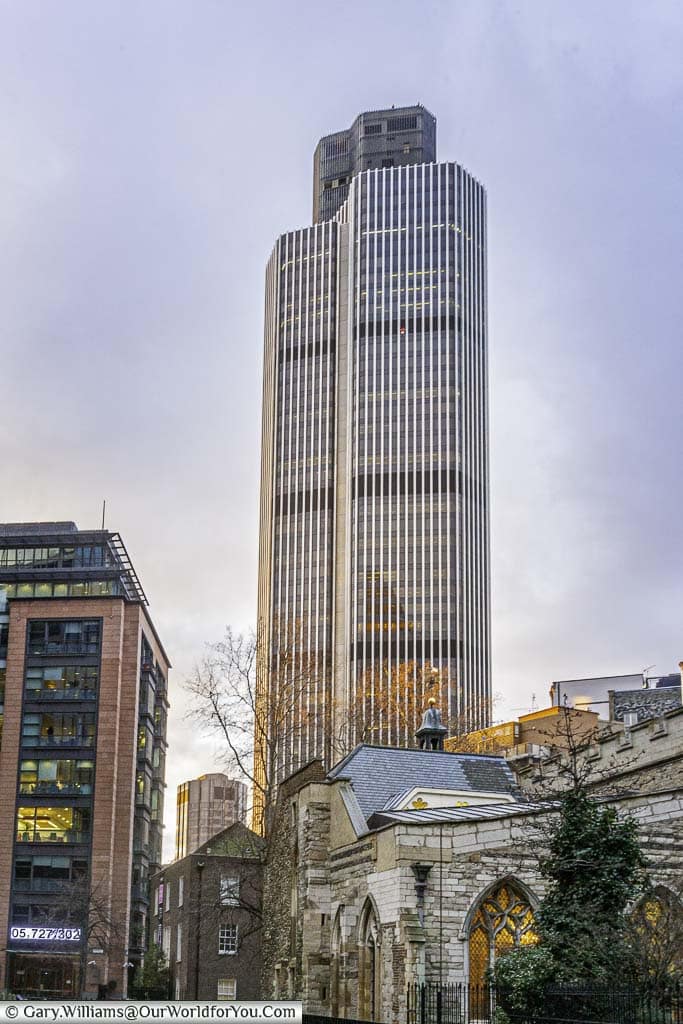
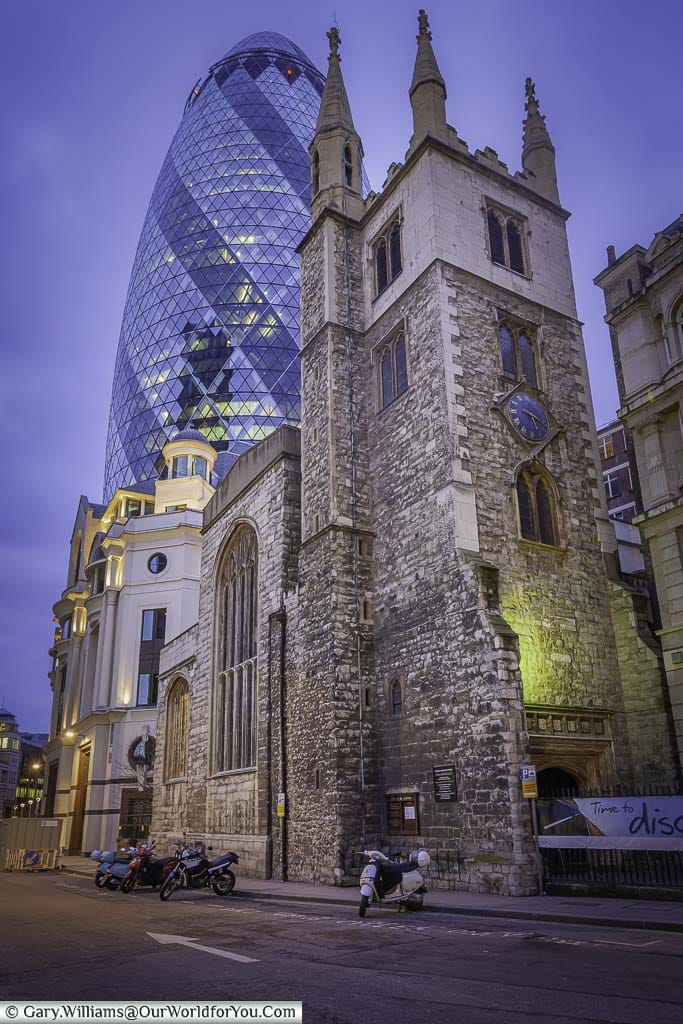
The most prominent is The Shard; however, close by Bank Station is the NatWest Tower, now known as Tower 42. This was to be the first of many skyscrapers taking to the London skies in 1980.
Also nearby is The Cheesegrater built in 2014, The Gherkin completed in 2003, the Walkie Talkie from 2014 and a more recent addition in 2018 is The Scalpel.
London's little treasures
Leadenhall Market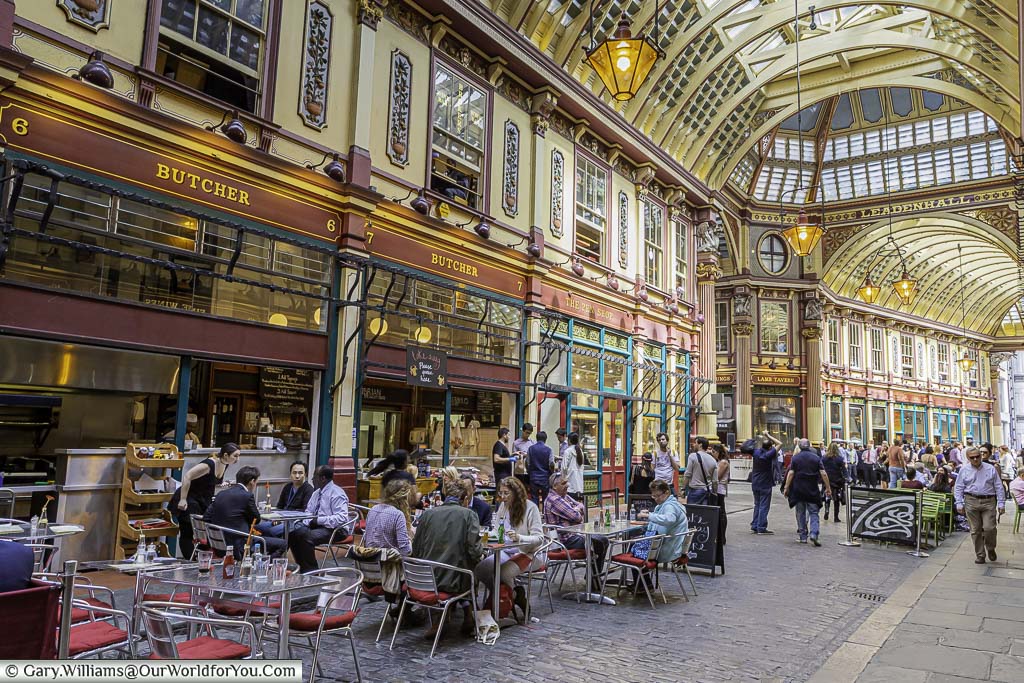
The history of Leadenhall dates a lot further back than the Victorians. It was early in the 1400s that the building was acquired by Dick Whittington and soon became a thriving market. A mixture of food produce was sold including meat, poultry, game and fish.
Over the centuries it evolved, and fruit, vegetables and dairy produce were also available. Today you will find a couple of food shops; however, now you’ll stumble across boutiques, restaurants and a rather pleasant pub.
If you've yet to discover London and its ancient history, then let's start planning. I find these DK Eyewitness Travel Guides invaluable. They're extremely informative, easy to follow, and the pictures and maps tempt you into discovering more of those fascinating sites.
You can now grab a recently revised copy of this guidebook, so you won't miss a thing.
A touch of London's history
MonumentThe Monument was built between 1671 and 1677 to commemorate the Great Fire of London.
It stands 202 feet high (62 metres), and if it were laid down, it would rest at the exact spot in Pudding Lane where the Great Fire started on 2nd September 1666.
There has been further debate as to whether the fire started in the bakery owned by the King’s baker Thomas Farriner, but who am I to question.
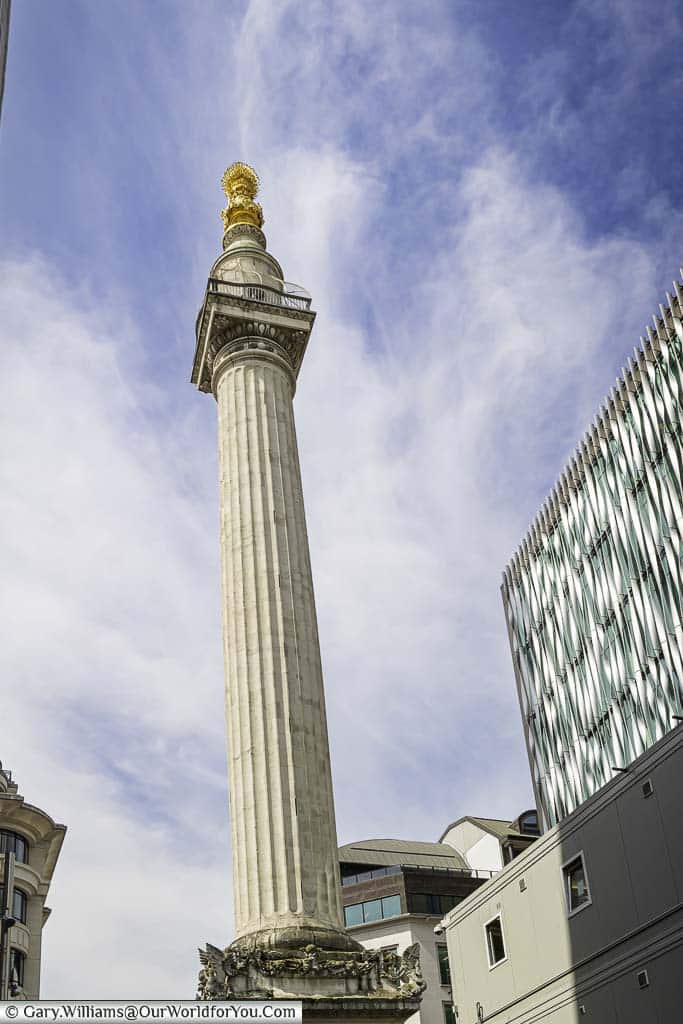
Where to stay in London
If you want to stay in the heart of the financial district then why not choose the Leonardo Royal London St Paul’s (formerly Grange St. Paul’s), as we did? A short hop from Bank.
There are plenty of choices, why not check out Booking.com for something that suits your requirements?
A hidden gem in London
Guildhall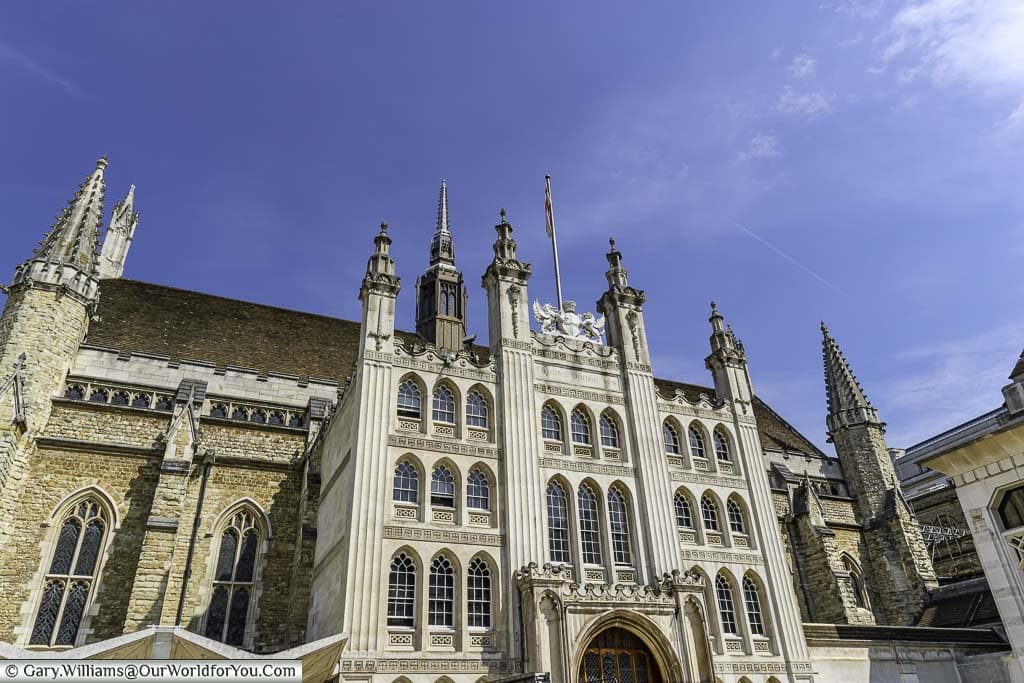
Many important trials took place within these walls, and the Great Hall is still used today for banquets. Though one of the incredible sights here is the surviving Medieval crypts.
The Guildhall has been used for many state occasions and has entertained Princes, Czars, Kings and Queens.
It’s good to talk!
Historic London
Bow Bells Church and Bow LaneJust a short hop further up Cheapside and you will spot the Church St Mary-le-Bow. This Sir Christopher Wren church is famous for its bells.
It is believed, that to be a true cockney, you must be born within earshot of the ringing of the ancient Bow Bells. So, you can now question a Londoner if they tell you they are a cockney.
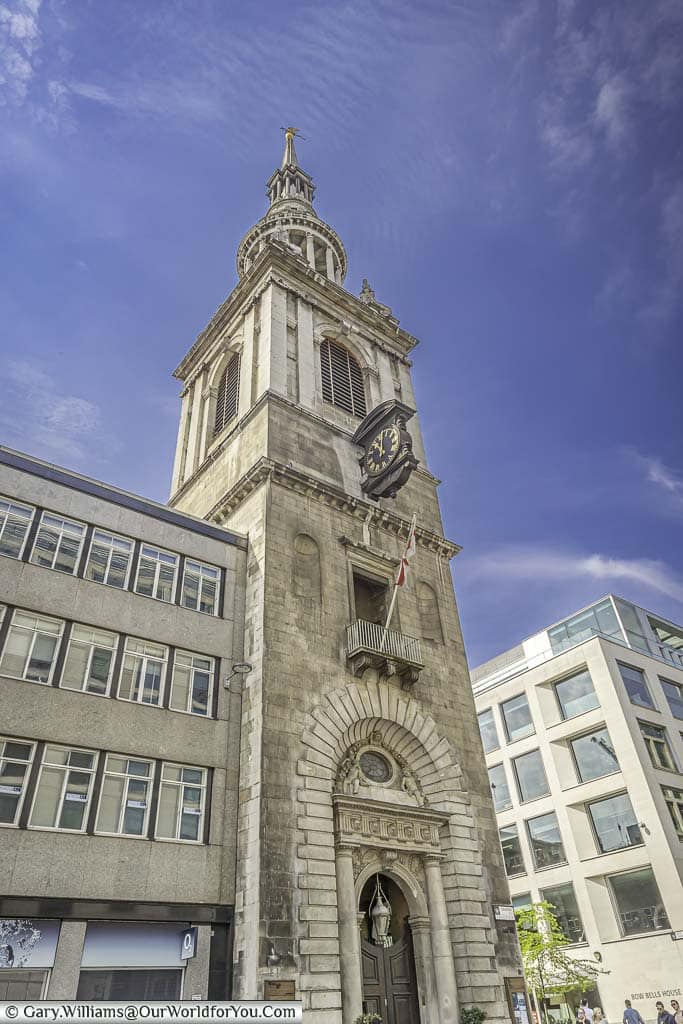
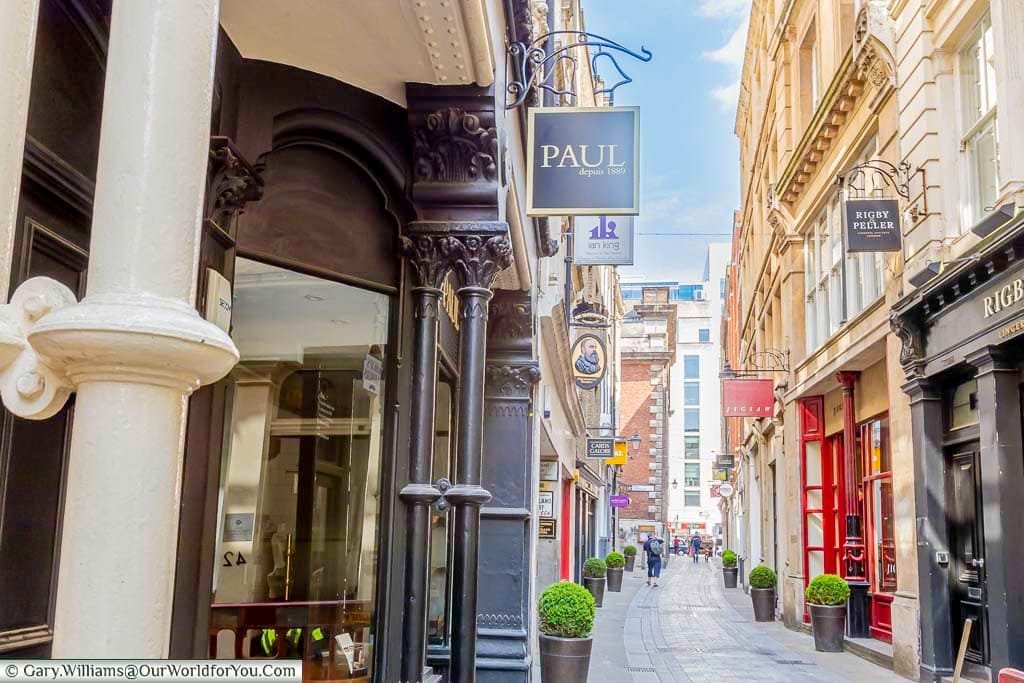
Tube station walks
A walk through London's history
Watling StreetPart of the way along Bow Lane it is crossed by Watling Street.
Watling Street is part of the ancient Roman road that runs from the coastal port of Dover in Kent and through the historic city of Canterbury. It then weaves its way through London onto St Albans and continues until Wroxeter in Shropshire, some 276 miles (444km) later.
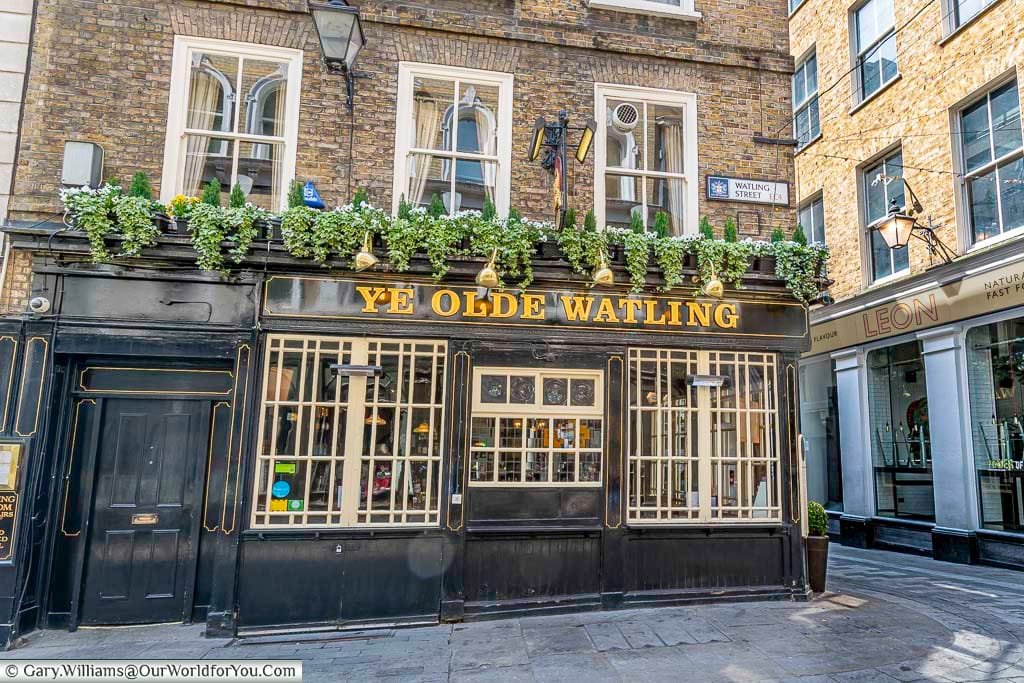
Visiting tip
The quirky side of London
A nod to its historyStocks Market
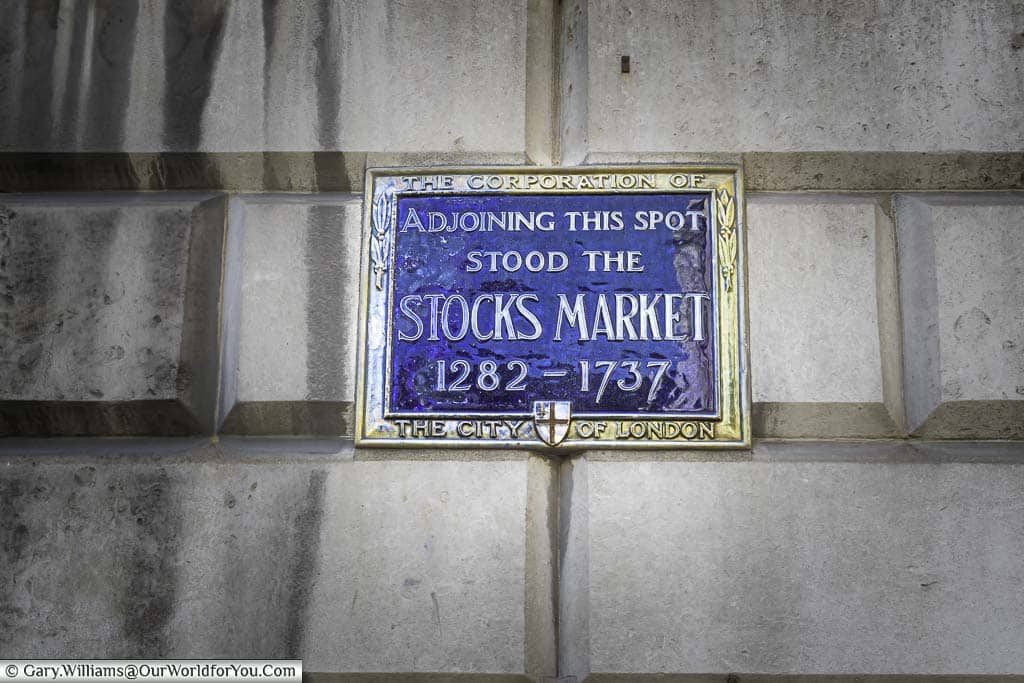
Police box
While strolling around by Guildhall, we came across an old City of London Police Box.
These were once seen everywhere and were used by the police and public to call for assistance.
The “call posts” in the City are pale blue and cast-iron rectangular boxes. Small than others as the street around the city are narrow.
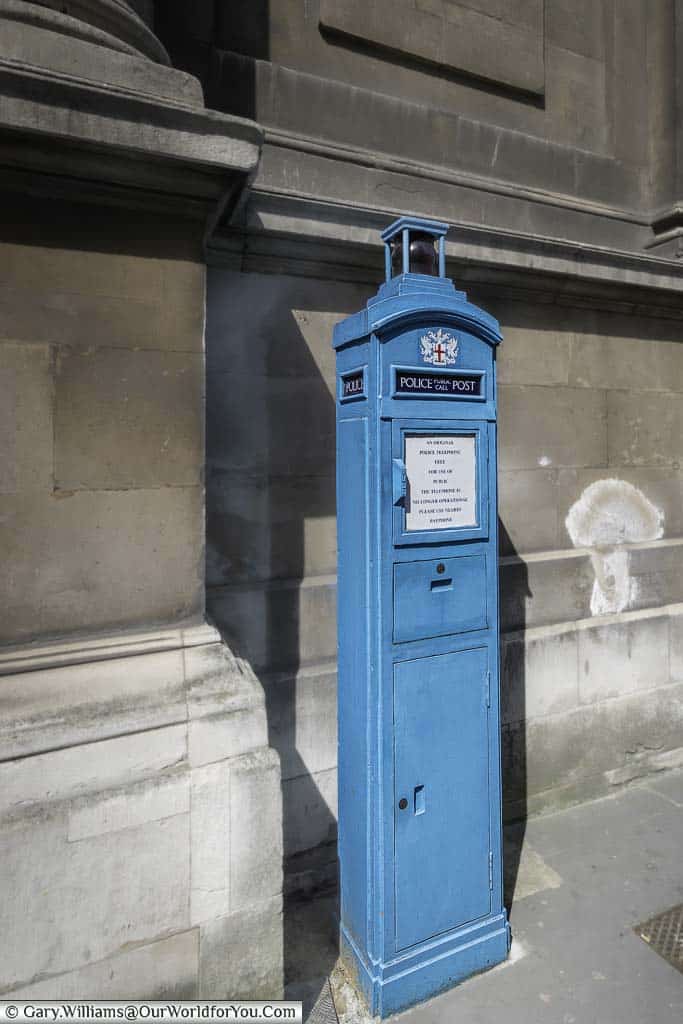
There are only eight remaining and are Grade II listed.
Fifty posts were installed in the "Square Mile" from 1907, and they remained in use until 1988.
Cordwainer
A tiny little area at the end of Bow Lane is known as the Cordwainer Ward.
A Cordwainer is a name for a professional leather shoemaker.
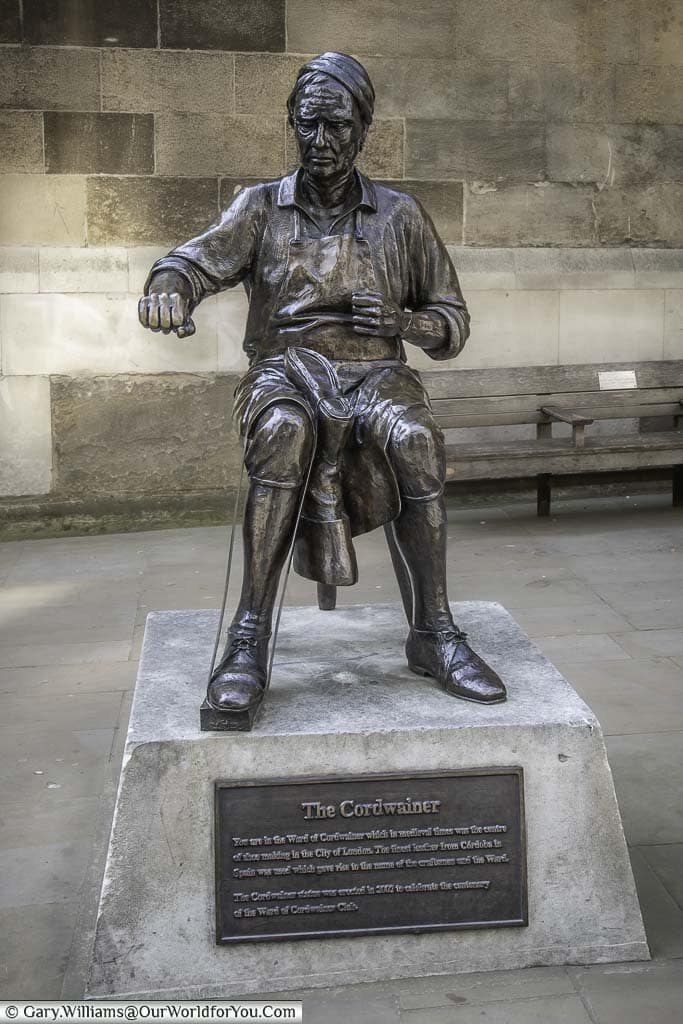
During medieval times this was a flourishing trade in this part of London.
The leather that was used was imported from Moorish Córdoba in Spain.
* This post may contain links to affiliated sites where we earn a small commission at no additional charge to you.
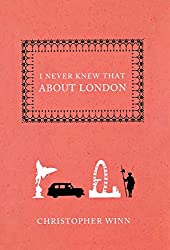
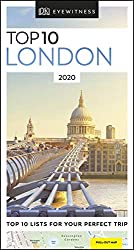

There are so many gems in London… Leadenhall Market is absolutely gorgeous. Thank you for this tour!
I’m glad you enjoyed my tour of Bank.
Yes, Leadenhall is delightful; I love it there. Have you visited Spitalfields Market and explored all the historic streets around there? It is fascinating and full of quirky discoveries. Stroll all around Fournier St, Wilkes St and Brick Lane; also have a peek around Gun St and Artillery Lane; I love this region of London.
Have fun
Janis